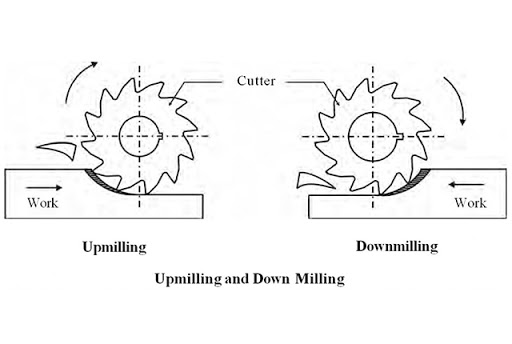Up Milling is the process of removing metal by a cutter which is rotated against the direction of travel of the workpiece is called up-milling. It is also called conventional milling.
In up-milling, the chip thickness is minimum at the beginning of the cut and maximum at the end of cut. The cutting force varies from zero to maximum.
Down Milling is the process of removing metal by a cutter which is rotated in the same direction of travel of the workpiece is called down milling. It is also called climb milling.
In down milling, the chip thickness is maximum at the beginning of the cut and minimum at the end of cut. The cutting force varies from maximum to zero.
48) Which one of the milling process is best suitable?
Answer is:
Down milling
Explanation:

ISRO Technician-B Machinist Question Paper - 2015 (Set -1) with Answer Key
For more MCQ's Click HereRelated ISRO Technician-B Machinist Question Paper - 2015 (Set -1) with Answer Key
Answer is:
Stop program unconditionally
Explanation:
M00 - Program Stop (non-optional)
M01 - Optional Stop: Operator Selected to Enable
M02 - End of Program
M03 - Spindle ON (CW Rotation)
M04 - Spindle ON (CCW Rotation)
M05 - Spindle Stop
M06 - Tool Change
M07 - Mist Coolant ON
M08 - Flood Coolant ON
M09 - Coolant OFF
M17 - FADAL subroutine return
M29 - Rigid Tapping Mode on Fanuc Controls
M30 - End of Program, Rewind and Reset Modes
M97 - Haas-Style Subprogram Call
M98 - Subprogram Call
M99 - Return from Subprogram
Answer is:
Waviness
